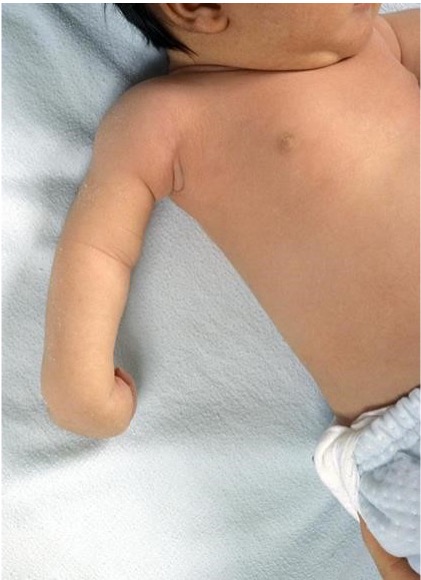The field of reproductive medicine is ample, and, with the current developments in medicine and technology, numerous techniques exist to achieve a wide variety of medical goals. Like there are multiple approaches to reproductive assistance, there is also a wide scope of techniques to assist contraception and sterilization.
Basics and Definitions
A comprehensive list of birth control-related terminology can be found here. In the meantime, here are some cornerstone definitions:
Contraception – in other words, birth control; any method to prevent pregnancy. These methods can be preventative (stop the sperm from fertilizing the egg – such as condoms, sponges, etc.), hormonal (stop the egg from being released), devices (such as IUDs), and surgical (sterilization).
Sterilization is a surgical method that permanently cuts the pathways for sperm or egg to reach the fallopian tube, where fertilization usually occurs.
Tubal ligation is a surgical procedure to permanently “close off” the space inside fallopian tubes to fertilize the egg.
What is tubal ligation?
Tubal ligation is one of the sterilization methods for women to avoid pregnancy permanently. Normally, in a female, fallopian tubes have a two-way function. Every month during menstruation, fallopian tubes provide a pathway for an egg to leave an ovary and have a chance to be potentially fertilized so that the new pregnancy can begin. For a pregnancy to take place, fertilization between a sperm cell and an egg cell occurs, which unites the sperm and the egg and gives rise to a single cell – a zygote – that later divides and gives rise to all cells and tissues in a new human being. This process – fertilization and the first 3-4 days after it – takes place in a fallopian tube, which connects an ovary to the uterus in a female. Later, this zygote that has started to grow migrates to the uterus, implants in its wall, and the pregnancy continues.
If a woman decides to avoid future pregnancies, she may undergo surgical sterilization, which is a permanent method of birth control. One form of such sterilization is tubal ligation, sometimes called “having your tubes tied.” A surgeon “disconnects” the ovaries from the uterus during a surgical procedure by tying, clamping, banding, or cutting fallopian tubes. Afterward, since there is no coherent fallopian tube, there is no pathway for an egg to descend during menstruation to be fertilized and to begin a pregnancy. Hence, sterilization is permanent.
Different tubal ligation methods
While the essence of the tubal ligation procedure is to somehow sever the pathway for an egg to prevent it from being fertilized, there are many ways that this can be achieved.
- Some methods involve electricity that can be used to provide thermal stress onto fallopian tubes to prevent them from working normally (electrocautery).
- Some of the methods involve mechanical methods, like the Falope ring that constricts the tube, prevents blood supply to it, and the tube tissue does not function properly.
Filshie clips – what are they, and how do they work?
Usually, Filshie clips are made of titanium or silicone – the same materials that are found in artificial joints, and breast implants are made of. Filshie clips are like little clamps put on the outside of both fallopian tubes. They mechanically clamp the tube, making the space inside smaller and physically does not let the egg pass through to become fertilized. Further, since they compress living tissue, they ultimately cut off efficient circulation to that tissue, which causes the tissue not to function how it did prior. As a result, lack of proper circulation provides further protection from unwanted pregnancies.
Filshie clips – where is the malpractice?
On the surface, Filshie clips are a simple and minimally invasive (in the surgical realm) way to prevent unwanted pregnancies permanently. However, recently, there has been some evidence that use of Filshie clips could be grounds for medical malpractice and product liability lawsuits.
From the standpoint of medical malpractice, there are the standard 4 elements that have to all take place for a medical malpractice lawsuit to take place:
- Duty to care implies the duty to collect informed consent from patients and
- Dereliction of this duty represents the violation of the said duty.
First and foremost, even before a procedure to put in Filshie clips begins, patients have to be told that the tubal ligation procedure they are about to go through will involve placing the Filshie clips. Patients have to be warned and informed about the benefits and risks of having Filshie clips protect them against unwanted pregnancies permanently. If and when complications due to the Filshie clips use arise, if patients had not been told that they have this specific sterilization device placed, this very fact itself could be grounds for medical malpractice cases since, technically, informed consent was not received in full.
Second, there can be complications related to the actual presence of the clips in the body. The physician’s or another medical professional’s duty is to inform patients that the Filshie clips they are about to use for sterilization might migrate from their original location around the fallopian tubes.
3) Direct cause and
4) Damages – the resulting healthcare issues related to the use of the Filshie clips have to be solely caused by the use and/or migration of these clips. These clips can migrate to different parts of the pelvic cavity (space in the body where Fallopian tubes are located), get stuck where they are not supposed to be present, and cause trauma and inflammation. As a result, a woman may experience both local and systemic symptoms. Locally, displaced Filshie clips can cause pain, tenderness, discomfort, loss of full ability to move the body. Systemically, migrated Filshie clips can cause fever, weakness, headaches, the feeling of general unwell, nausea and/or vomiting, and loss of appetite. However, the issue of post-Filshie-clip-inflammation, just like the issue of migration, is a tricky one. The existence of previous medical conditions might complicate the connection between migration of Filshie clips and subsequent disturbances in health.
Further, while the use of Filshie clips could be grounds for a medical malpractice suit, their placement might also fall under the scope of product liability. Product liability is a type of lawsuit where the manufacturer knowingly sold a faulty or defective product, which then caused harm to patients. The burden of proof is similar – to have a product liability suit related to the use of Filshie clips, there needs to be a duty of the manufacturer to warn about risks associated with the product, the breach of this duty, and the causal link between the product and the damages.
Therefore, since in the eyes of the law, medical malpractice related to the use of Filshie clips could be rather versatile and sometimes not too straightforward, Justpoint is here to help you evaluate if you have a legal case related to the use of Filshie clips as a way of permanent birth control.












